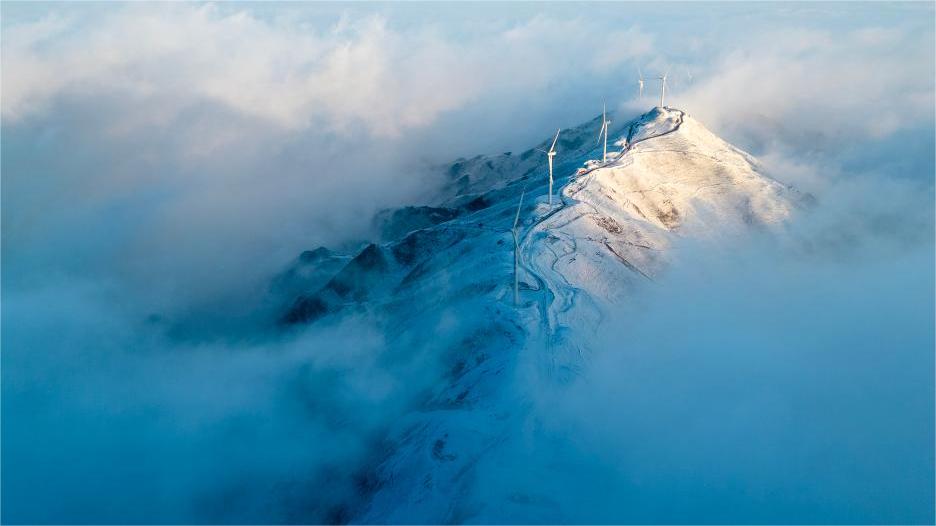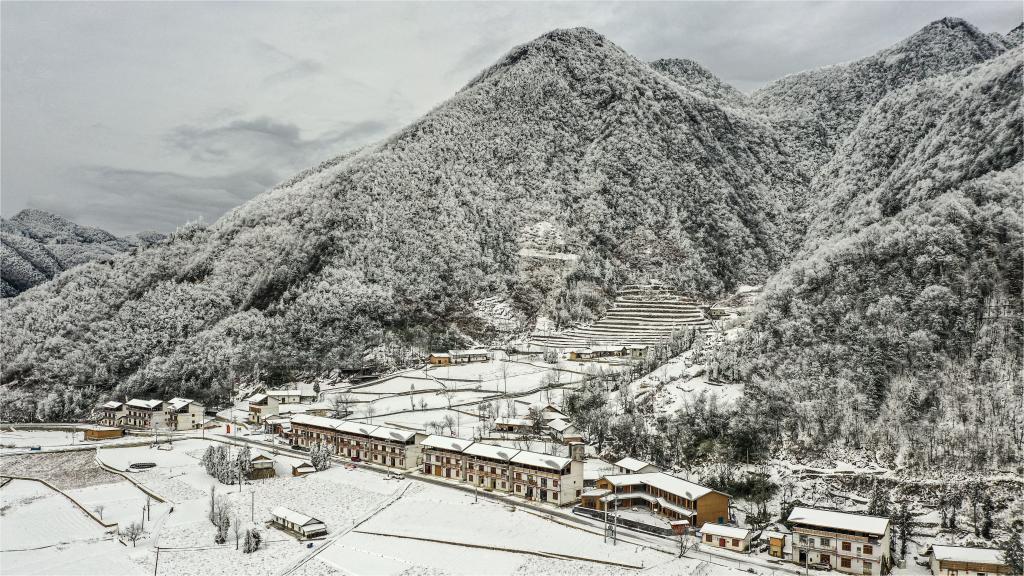Landscape of earth forest in Zanda County, China's Xizang

An aerial drone photo taken on Jan. 30, 2024 shows the landscape of earth forest in Zanda County of Ngari Prefecture, southwest China's Xizang Autonomous Region. Zanda is famous for the unique landscape of earth forest. With gullies, ravines and steep mountainsides, the unique landscape was shaped as a result of gradual geological movements of the Himalayan region ever since the Quaternary Period from 2.5 million years ago and the impact of perennial water erosion and airslaking. (Photo by Tenzin Norbu/Xinhua)

An aerial drone photo taken on Jan. 30, 2024 shows the landscape of earth forest in Zanda County of Ngari Prefecture, southwest China's Xizang Autonomous Region. Zanda is famous for the unique landscape of earth forest. With gullies, ravines and steep mountainsides, the unique landscape was shaped as a result of gradual geological movements of the Himalayan region ever since the Quaternary Period from 2.5 million years ago and the impact of perennial water erosion and airslaking. (Xinhua/Liu Wenbo)

This photo taken on Jan. 30, 2024 shows the scenery of the ruins of the Guge Kingdom in Zanda County of Ngari Prefecture, southwest China's Xizang Autonomous Region. Zanda is famous for the unique landscape of earth forest. With gullies, ravines and steep mountainsides, the unique landscape was shaped as a result of gradual geological movements of the Himalayan region ever since the Quaternary Period from 2.5 million years ago and the impact of perennial water erosion and airslaking. (Xinhua/Guan Minghui)

This photo taken on Jan. 30, 2024 shows the scenery of the ruins of the Guge Kingdom in Zanda County of Ngari Prefecture, southwest China's Xizang Autonomous Region. Zanda is famous for the unique landscape of earth forest. With gullies, ravines and steep mountainsides, the unique landscape was shaped as a result of gradual geological movements of the Himalayan region ever since the Quaternary Period from 2.5 million years ago and the impact of perennial water erosion and airslaking. (Xinhua/Guan Minghui)

An aerial drone photo taken on Jan. 30, 2024 shows the landscape of earth forest in Zanda County of Ngari Prefecture, southwest China's Xizang Autonomous Region. Zanda is famous for the unique landscape of earth forest. With gullies, ravines and steep mountainsides, the unique landscape was shaped as a result of gradual geological movements of the Himalayan region ever since the Quaternary Period from 2.5 million years ago and the impact of perennial water erosion and airslaking. (Xinhua/Liu Wenbo)

This photo taken on Jan. 30, 2024 shows the scenery of the ruins of the Guge Kingdom in Zanda County of Ngari Prefecture, southwest China's Xizang Autonomous Region. Zanda is famous for the unique landscape of earth forest. With gullies, ravines and steep mountainsides, the unique landscape was shaped as a result of gradual geological movements of the Himalayan region ever since the Quaternary Period from 2.5 million years ago and the impact of perennial water erosion and airslaking. (Xinhua/Guan Minghui)

The landscape of earth forest is seen through the ruins of the Guge Kingdom in Zanda County of Ngari Prefecture, southwest China's Xizang Autonomous Region, Jan. 30, 2024. Zanda is famous for the unique landscape of earth forest. With gullies, ravines and steep mountainsides, the unique landscape was shaped as a result of gradual geological movements of the Himalayan region ever since the Quaternary Period from 2.5 million years ago and the impact of perennial water erosion and airslaking. (Xinhua/Guan Minghui)

This photo taken on Jan. 30, 2024 shows the detail of the ruins of the Guge Kingdom in Zanda County of Ngari Prefecture, southwest China's Xizang Autonomous Region. Zanda is famous for the unique landscape of earth forest. With gullies, ravines and steep mountainsides, the unique landscape was shaped as a result of gradual geological movements of the Himalayan region ever since the Quaternary Period from 2.5 million years ago and the impact of perennial water erosion and airslaking. (Xinhua/Guan Minghui)
Photos
Related Stories
Copyright © 2024 People's Daily Online. All Rights Reserved.









